Related Research Articles
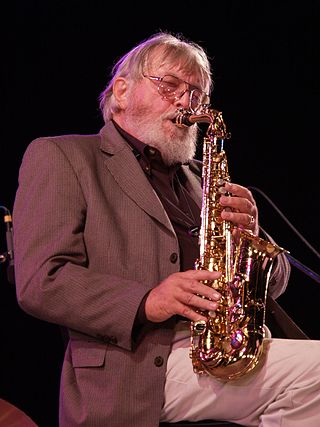
Clifford Everett "Bud" Shank Jr. was an American alto saxophonist and flautist. He rose to prominence in the early 1950s playing lead alto and flute in Stan Kenton's Innovations in Modern Music Orchestra and throughout the decade worked in various small jazz combos. He spent the 1960s as a first-call studio musician in Hollywood. In the 1970s and 1980s, he performed regularly with the L. A. Four. Shank ultimately abandoned the flute to focus exclusively on playing jazz on the alto saxophone. He also recorded on tenor and baritone sax. His most famous recording is probably the version of "Harlem Nocturne" used as the theme song in Mickey Spillane's Mike Hammer. He is also known for the soundtrack recordings with his group to the surfing films of Bruce Brown in the late 1950s and early 1960s, and for the alto flute solo on the song "California Dreamin'" recorded by the Mamas & the Papas in 1965.

Cool jazz is a style of modern jazz music inspired by bebop and big band that arose in the United States after World War II. It is characterized by relaxed tempos and a lighter tone than that used in the fast and complex bebop style. Cool jazz often employs formal arrangements and incorporates elements of classical music. Broadly, the genre refers to a number of post-war jazz styles employing a more subdued approach than that of contemporaneous jazz idioms. As Paul Tanner, Maurice Gerow, and David Megill suggest, "the tonal sonorities of these conservative players could be compared to pastel colors, while the solos of [Dizzy] Gillespie and his followers could be compared to fiery red colors."
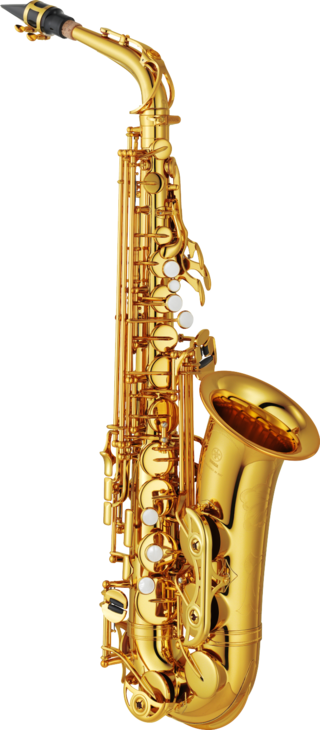
The alto saxophone is a member of the saxophone family of woodwind instruments. Saxophones were invented by Belgian instrument designer Adolphe Sax in the 1840s and patented in 1846. The alto saxophone is pitched in the key of E♭, smaller than the B♭ tenor but larger than the B♭ soprano. It is the most common saxophone and is used in popular music, concert bands, chamber music, solo repertoire, military bands, marching bands, pep bands, carnatic music, and jazz.

Stanley Newcomb Kenton was an American popular music and jazz artist. As a pianist, composer, arranger and band leader, he led an innovative and influential jazz orchestra for almost four decades. Though Kenton had several pop hits from the early 1940s into the 1960s, his music was always forward-looking. Kenton was also a pioneer in the field of jazz education, creating the Stan Kenton Jazz Camp in 1959 at Indiana University.

Leon "Lee" Konitz was an American jazz alto saxophonist and composer.
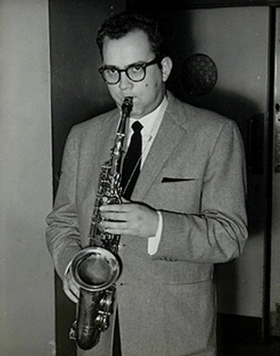
Leonard Niehaus was an American alto saxophonist, composer and arranger on the West Coast jazz scene. He played with the Stan Kenton Orchestra and served as one of Kenton's primary staff arrangers. He also played with Ray Vasquez and trombonist and Vocalist, Phil Carreon and other jazz bands on the U.S. West Coast. Niehaus had a close association as composer and arranger on motion pictures produced by Clint Eastwood.

Richie Kamuca was an American jazz tenor saxophonist.
"Yardbird Suite" is a bebop standard composed by jazz saxophonist Charlie Parker in 1946. The title combines Parker's nickname "Yardbird" and a colloquial use of the classical music term "suite". The composition uses an 32-bar AABA form. The "graceful, hip melody, became something of an anthem for beboppers."
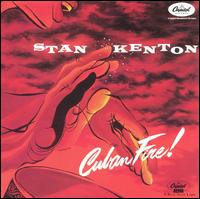
Cuban Fire! is an album by Stan Kenton and his orchestra released in 1956 by Capitol Records. This was Stan Kenton's big band's first full-length recording of Afro-Cuban-styled music. The LP charted for four weeks in Billboard starting on September 15, 1956, peaking at #17. The concept of the original 1956 recording centers on the Cuban Fire! suite Kenton had commissioned from composer Johnny Richards. The 1991 CD re-issue is augmented with one extra track from the 1956 sessions and five cuts recorded four years later by the first of Kenton's mellophonium orchestras.
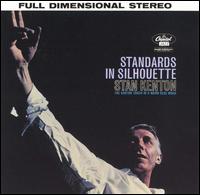
Standards in Silhouette is an album recorded in September 1959 by Stan Kenton and his orchestra. The entire set of arrangements for the LP were written by Bill Mathieu. This recording stands alone in approach and style; Kenton himself only plays on "Django" and every standard is done at a slow, ballad tempo with very sparse, effusive writing.

City of Glass, an album originally issued as a 10" LP by Stan Kenton, consists entirely of the music of Bob Graettinger. The original album has been reconstituted in different LP re-issues, and the entire set of Kenton/Graettinger Capitol Records sessions is on the digital CD City of Glass.

Extension is the third album by composer/arranger/keyboardist Clare Fischer, and his first for big band, recorded and released in 1963 on the Pacific Jazz label, reissued on CD in 2002 as America the Beautiful, and, under its original name, in 2012.

Stan Kenton Plays Chicago is a studio album by American jazz musician Stan Kenton and his orchestra, released on August 17, 1974, by Creative World Records. Recording sessions for the album took place at Universal Recording Corp. in Chicago on June 4, 5, 6, 1974. The sessions are entirely based on the music of modern rock n' roll groups, in contrast to Kenton's earlier work which primarily featured swing with some progressive jazz leanings.

Adventures in Jazz is an album by the Stan Kenton Orchestra, recorded in late 1961 but not released until about a year later in November 1962. The album won a Grammy Award in the category for Best Jazz Performance – Large Group (Instrumental) category in 1963. This would be Kenton's second Grammy honor in as many years, the first being Kenton's West Side Story winning the Best Large Jazz Ensemble Album in 1962. Adventures In Jazz was also nominated for Best Engineered recording for the 1963 Grammys. The 1999 CD re-issue of Adventures In Jazz is augmented with two alternate takes from the original recording sessions and one track from Kenton's release Sophisticated Approach.

Kenton's West Side Story is an album by the Stan Kenton Orchestra recorded in 1961 and released by Capitol Records. It won the Grammy Award in 1962 for Best Jazz Performance – Large Group (Instrumental). The album was recorded in 1961 and released quickly to take advantage of the movie premiere of the musical West Side Story. Kenton won his first Grammy Award and he won again the next year in the same category with Adventures in Jazz. Kenton's West Side Story peaked at No. 16 on the Billboard magazine album chart.
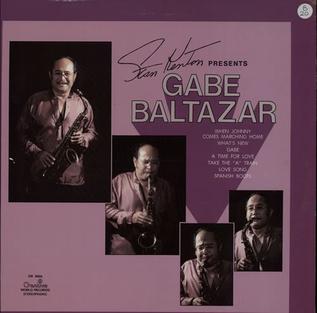
Stan Kenton Presents Gabe Baltazar is an album by Gabe Baltazar. It was the last recording by Stan Kenton's Creative World Records label prior to Kenton's death on August 25, 1979. It was also the last of the "Stan Kenton presents..." series of albums ; this recording presents the talent of the alto saxophonist and former Kenton band member Gabe Baltazar. Though never reissued on CD the recording is critically acclaimed and does a good job highlighting the jazz talents of a legendary jazz artist (Baltazar) at the peak of his playing career. He is backed up by a 17 piece big band on most cuts, a string section is added to one track.

The Jazz Compositions of Dee Barton is an album by bandleader Stan Kenton recorded in 1967 by Capitol Records.
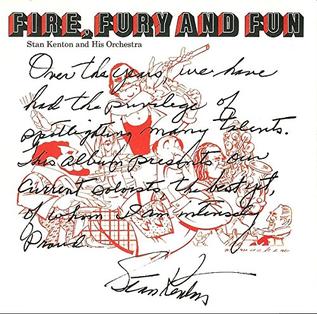
Fire, Fury, and Fun is a studio album by American jazz musician Stan Kenton and his orchestra, released on Creative World Records. Recording sessions for the album took place in Chicago on September 26/27, 1974 at Universal Recording.

National Anthems Of The World is the first studio album by American jazz musician Stan Kenton and his orchestra under the Creative World label, released late 1972. Recording sessions for the album took place at Western Recorders, August 25, 28, 29, 30 & 31, 1972 in Hollywood, California.
References
- 1 2 obituary at Austin360.com
- 1 2 3 Feather, Leonard. Gitler, Ira. The Biographical Encyclopedia of Jazz Oxford University Press. Entry for Tony Campise
- 1 2 3 Sparke, Michael. (2010) "Stan Kenton: This Is an Orchestra!" University of North Texas Press. pp. 263.
- ↑ Koster, Rick. Texas Music (1998) pub. Macmillan. pp.327
- ↑ Cooper, Dr. Jack. (Director of Jazz Studies, University of Memphis). As a saxophonist and arranger; played with, wrote for, and interviewed Tony Campise while living in Austin, Texas 1995–1998
- ↑ Dicaire, David. Jazz Musicians, 1945 to the Present. (2006) McFarland & Comp. pp. 157
- ↑ Texas Monthly Magazine, December 1981. Pub. Emmis Communications. pp. 88
- ↑ Lee, William F. "Artistry in Rhythm" (1994), Publ. Creative Press of Los Angeles. pp. 455
- ↑ Sparke, Michael; Venudor, Peter (1998) "Stan Kenton, The Studio Sessions". Balboa Books. pp. 210–213. ISBN 0-936653-82-5
- ↑ New York Magazine, June 14, 1993, pp. 85
- ↑ "Tony Campise – Jazz Bars and Battle Scars".
- ↑ Welburn, Ron. Review: JazzTimes Magazine. Dec 1994. pp. 143
- ↑ Review: Cadence Magazine, Volume 22, Issues 1–6. Jan. 1996. pp. 97